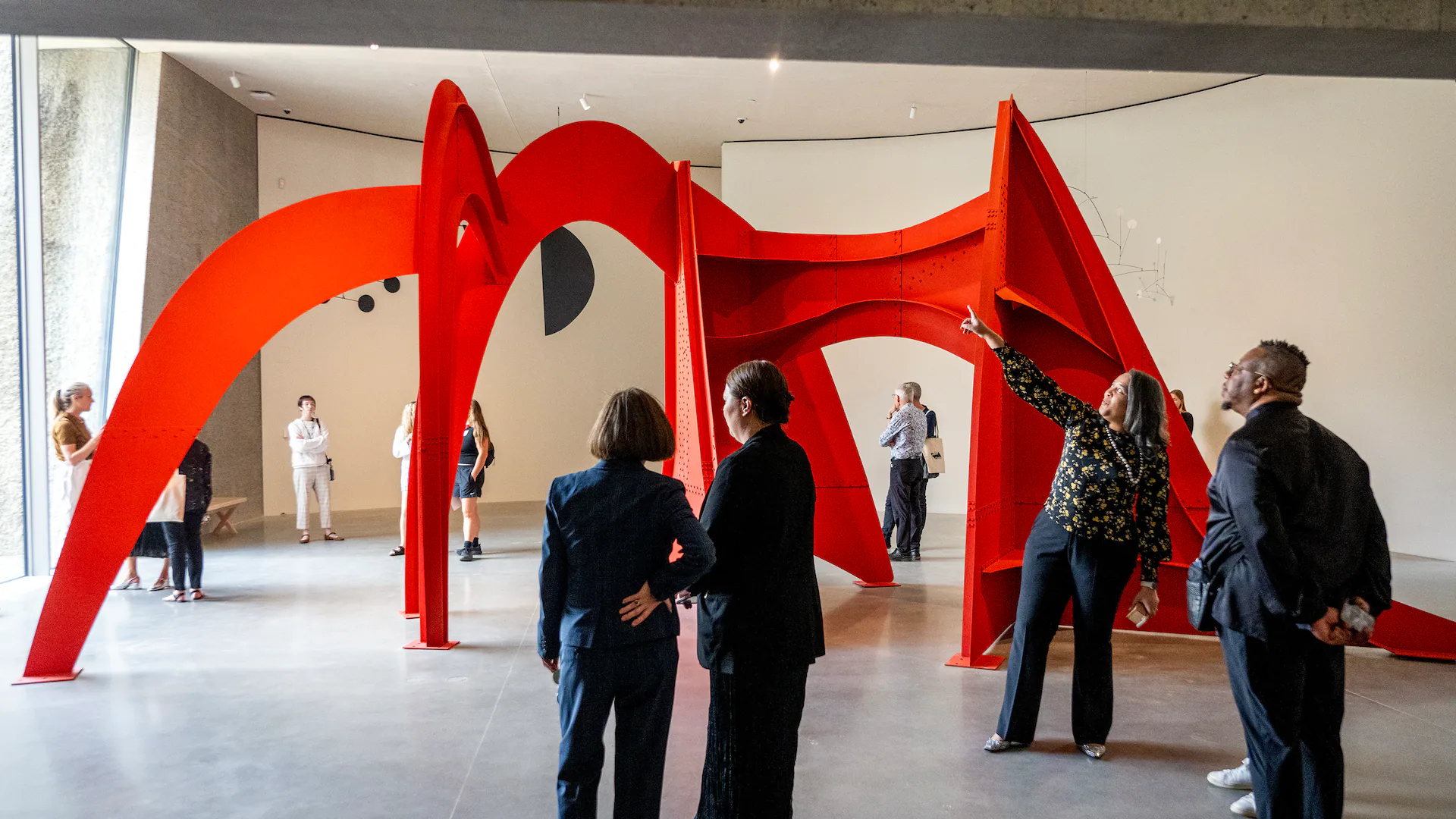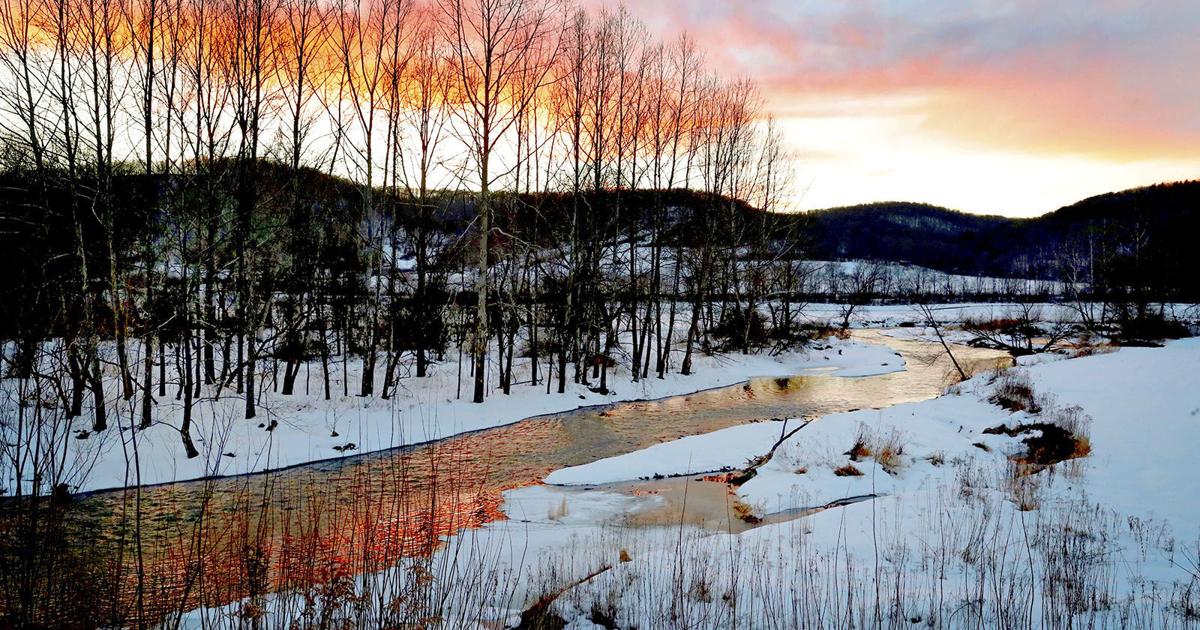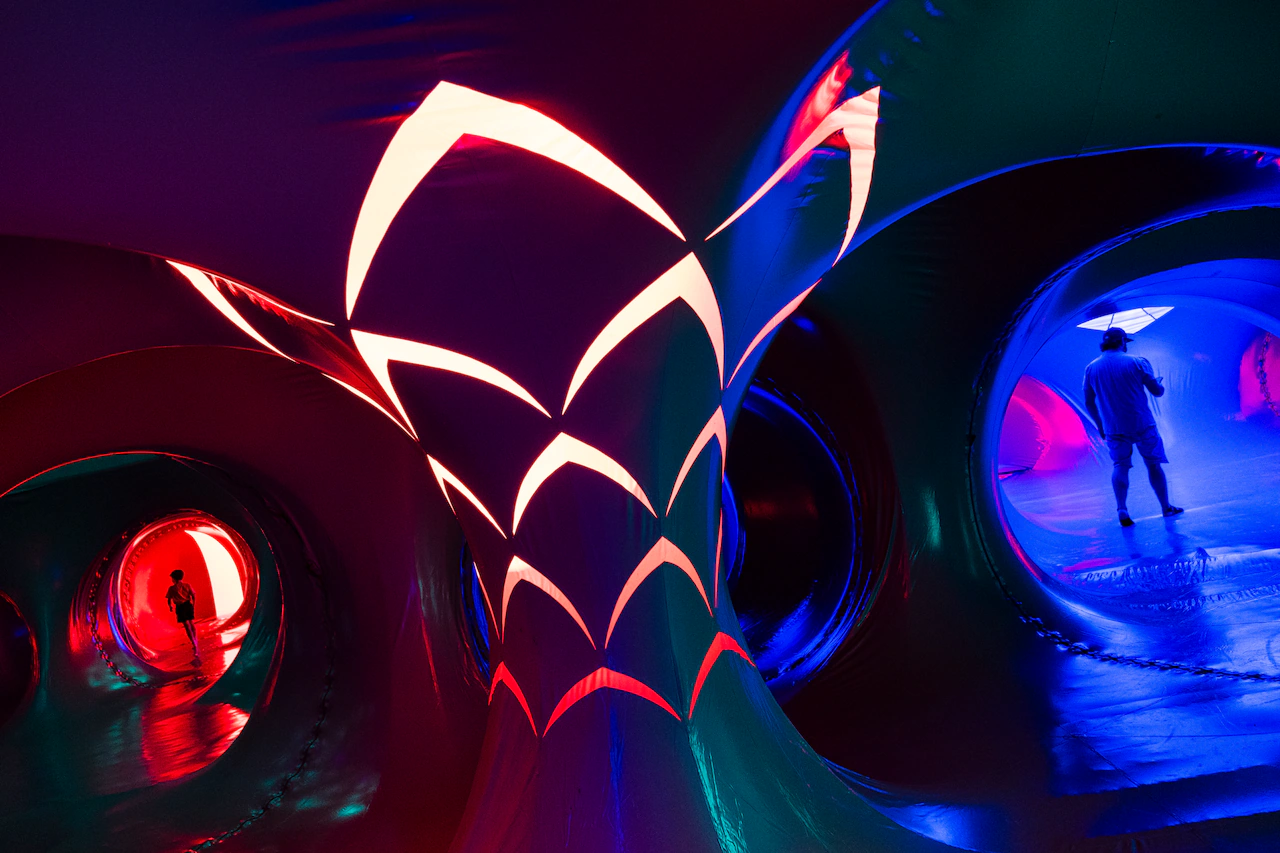
Calder Gardens has arrived, and it’s safe to say that Philadelphia has never seen anything quite like it — not on the Parkway, not anywhere else.
If the Barnes Foundation hides behind a slender grove and the Rodin Museum tastefully coaxes visitors into its classical confines, the Calder flashes its brilliance onto the Ben Franklin Parkway, with a sleek stainless steel skin atop a slope of colorful gardens.
Half nature retreat, half shrine to a single artist, Calder Gardens is expected to project a presence that far outstrips its relatively modest size, drawing a potential visitorship of 100,000 in the first year.
The $90 million project, built on city-owned land and paid for by both private and public funds, began more than a quarter-century ago in another configuration before assuming its final form.
What ended up getting built is the happy product of several disparate interests.
The city got a major new draw in its quest for cultural tourism dollars.
The Calder Foundation, which owns much of the art that will rotate in and out of the venue on an ongoing basis, landed a center stage in a major city for its namesake artist, Alexander “Sandy” Calder.
And culture vultures and fans of Philadelphia lore now have, over a half-mile stretch, a richer visual representation of one of the city’s great dynastic art stories: from the sculpture at City Hall of William Penn and others by Alexander Milne Calder; to the allegorical figures of Swann Memorial Fountain in Logan Circle by his son, Alexander Stirling Calder; to an entire museum devoted to his son, who died in 1976 at age 78 after redefining sculpture in the 20th century.
The planners say the timing of the opening means Calder Gardens will deliver to Philadelphia and the Calder’s visitors something society sorely needs.
“Look, we live in very challenging times,” said Joseph Neubauer, the Philadelphia philanthropist whose gifts with his wife, Jeanette Lerman-Neubauer, are the single largest source of private money to the project. “The environment is not very stable, not just for the city, but for the state, for the country, for the world. We have a government that is trying to change the zeitgeist of America completely, and I think that art is so important today for people to just be able to look at beautiful things, understand beautiful things, be in nature, and get away from the day-to-day burdens that are on everybody’s mind today.
“Art and music take you to a different world,” Neubauer said. “They allow your mind to contemplate other things, rather than the here and now all the time.”
A quarter-century quest
It wasn’t Calder’s art that made Neubauer become the project’s biggest private donor and the major force behind it.
The previous incarnation of the project was pursued beginning in the late 1990s by then-Mayor Ed Rendell and the late philanthropist (and onetime Inquirer owner) H.F. “Gerry” Lenfest, and was eventually abandoned.
Neubauer had been deeply involved in the Barnes Foundation, and at the end of a meeting at which Neubauer asked Lenfest to become an honorary member of the Barnes board, Lenfest turned the tables.
“We thought the meeting was over and he said, ‘Sit down. I want to talk to you about something else,’” Neubauer said. “So he suggested that we had to resuscitate the Calder project and said, ‘Joe, you ought to try and you ought to do it.’ And I thought that if I’m able to contribute that to the community which accepted me for 40 years, if I can enable this to happen, that I should do it. For an immigrant boy who came to this country at 14, not speaking English, to be able to do that — if you think about the 10 most important things you’ve done in your life, the Barnes clearly is one, and on the opposite side of the Parkway, Calder Gardens is going to be a second one.”
Neubauer owns several Calders himself — works acquired before his involvement with Calder Gardens. He says he was captivated by the motion and color.
“I love his mobiles. It’s a form of art that didn’t exist before,” he said. “Every morning that I walk through our apartment and I see the art, it helps my day.”
Ephemeral by design
The Calder is being seen as a major new contributor to cultural tourism because of its proximity to the Rodin, Barnes, and Philadelphia Museum of Art, creating artistic critical mass.
“The PMA and the Rodin and the Barnes all have extremely strong collections, but nobody would say that for any of them, their strength is with a 20th-century artist,” said Marsha Perelman, president of the Trustees of Calder Gardens and a major art collector. The Art Museum has 20th-century art, she says, “but it’s not what it’s known for. It’s known for its encyclopedic collection. This will be known for a leading 20th-century artist.”
Visitors looking for Calder’s signature mobiles and stabiles will be sated with works like the monumental Jerusalem Stabile II (1976). An untitled mobile from 1948 owned by the Calder Foundation is classic Calder: Its 20 disks of red, orange, yellow, and blue suspended across metal branches couldn’t radiate more joy were they candy sprinkles.
And then there are some more novel strokes. One of Calder Gardens’ most emotionally charged — and mystical — moments draws its inspiration from Ronchamp chapel, Le Corbusier’s seminal work from the 1950s, about an hour and a half west of Basel, home of the Calder’s architects, Herzog & de Meuron.
Around a corner in the Calder you find yourself confronted with what feels like a physical impossibility. The space is smooth and white, sculpted so there is no clear delineation between the walls and floor, creating the illusion of a bottomless fog.
Suspended in the white void is Calder’s black Eucalyptus (1940).
The space spirals up into a curved cone lighted from above. Here, art and architecture become coequals, each contributing its own philosophical musings about space, time, and perceptions. The room is called, appropriately, the “Apse Gallery.”
All of these works are fleeting, since the Calder was designed to have no permanent collection. On opening day — Sunday — a total of 37 works were in residence. Some will stay months, others a few years. Occasionally a piece may leave to be part of an exhibition elsewhere, then return again — perched in the same place as it was, or perhaps not. The aleatory aspect means no one can claim to have ever really “seen” the museum in the final sense of the word.
The other ever-changing elements are the gardens, designed by Dutch garden designer Piet Oudolf.
The gardens, which will be free and open to the public during normal operating hours, are more complex and varied than any other on the Parkway.
Each distinct area has its own repertoire of flora, with a total of 250 varieties of plants — Hubricht’s bluestar, Turkish sage, swamp white oak, amethyst falls wisteria, sourwood, hairy beardtongue, and on and on.
“He’s an artist. It’s just that he paints in plants,” Neubauer said.
The plantings will take time to adjust to their new environment and reach their potential, “so everything is a sort of promise for next year and after,” Oudolf said.
The intention was to create a walkway into the site “which is meandering instead of straight,” he said, “so you create different perspectives.”
That fits with the broader intention of the space: “Open to interpretation” is Calder Gardens’ tagline. Officials like to say the place isn’t a museum, and works will be displayed without titles, dates, historical context, or labels providing interpretations. (Presumably, if it’s really open to interpretation, it’s all right to call Calder Gardens a “museum” if that’s what you see it as.)
Calder Gardens, 21st Street and the Benjamin Franklin Parkway, is open every day except Tuesday, from 11 a.m. to 5 p.m., with a members-only hour from 10 a.m. to 11 a.m. Tickets are $5 to $18, with children 12 and under free. Memberships, which range from $75 to $550, include free admission and other benefits. Booking tickets in advance is recommended. Information: caldergardens.org, 215-278-7250.



